Financial System Adaptability and Resilience
This research group investigates critical aspects of financial system adaptability and resilience. First, it analyses the impact of natural disasters on financial systems. Second, the group aims to investigate the effects of political preferences for the green transition. Third, the group's research analyses the role of culture in economies.
Research Cluster
Financial Resilience and RegulationYour contact

Mitglied - Department Financial Markets
EXTERNAL FUNDING
07.2016 ‐ 12.2018
Relationship Lenders and Unorthodox Monetary Policy: Investment, Employment, and Resource Reallocation Effects
Leibniz Association
We combine a number of unique and proprietary data sources to measure the impact of relationship lenders and unconventional monetary policy during and after the European sovereign debt crisis on the real economy. Establishing systematic links between different research data centers (Forschungsdatenzentren, FDZ) and central banks with detailed micro-level information on both financial and real activity is the stand-alone proposition of our proposal. The main objective is to permit the identification of causal effects, or their absence, regarding which policies were conducive to mitigate financial shocks and stimulate real economic activities, such as employment, investment, or the closure of plants.
01.2015 ‐ 12.2019
Interactions between Bank-specific Risk and Macroeconomic Performance
German Research Foundation (DFG)
Refereed Publications
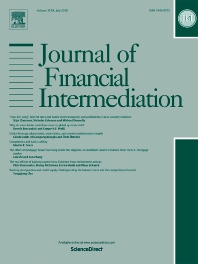
Informal or Formal Financing? Evidence on the Co-Funding of Chinese Firms
in: Journal of Financial Intermediation, 2016
Abstract
Different modes of external finance provide heterogeneous benefits for the borrowing firms. Informal finance offers informational advantages whereas formal finance is scalable. Using unique survey data from China, we find that informal finance is associated with higher sales growth for small firms but lower sales growth for large firms. We identify a complementary effect between informal and formal finance for the sales growth of small firms, but not for large firms. Co-funding, thereby simultaneously using the informational advantage of informal finance and the scalability of formal finance, is therefore the optimal choice for small firms.
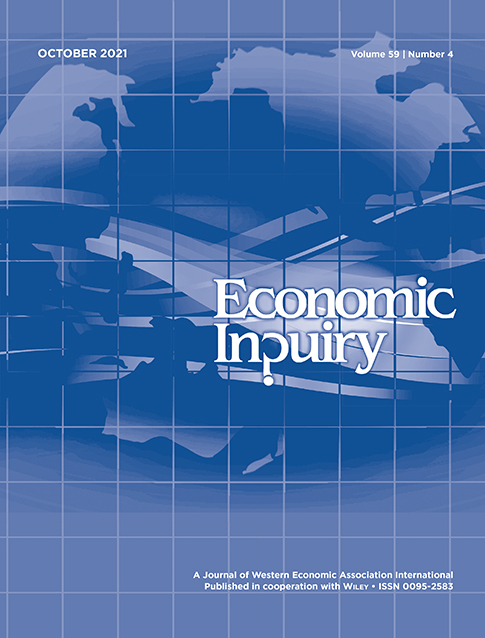
Did TARP Distort Competition Among Sound Unsupported Banks?
in: Economic Inquiry, No. 2, 2016
Abstract
This study investigates if the Troubled Asset Relief Program (TARP) distorted price competition in U.S. banking. Political indicators reveal bailout expectations after 2009, manifested as beliefs about the predicted probability of receiving equity support relative to failing during the TARP disbursement period. In addition, the TARP affected the competitive conduct of unsupported banks after the program stopped in the fourth quarter of 2009. Loan rates were higher, and the risk premium required by depositors was lower for banks with higher bailout expectations. The interest margins of unsupported banks increased in the immediate aftermath of the TARP disbursement but not after 2010. No effects emerged for loan or deposit growth, which suggests that protected banks did not increase their market shares at the expense of less protected banks.
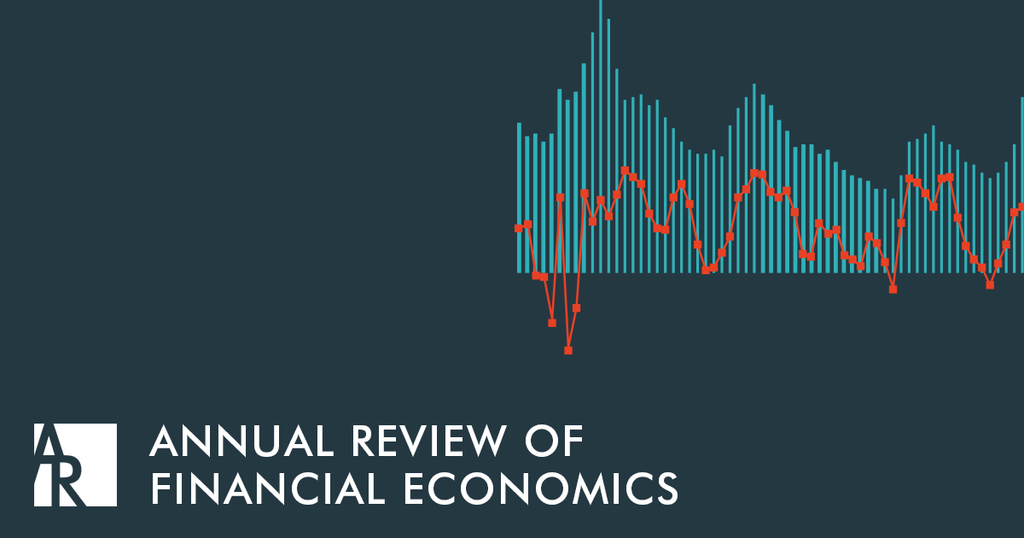
A Review of Empirical Research on the Design and Impact of Regulation in the Banking Sector
in: Annual Review of Financial Economics, 2015
Abstract
We review existing empirical research on the design and impact of regulation in the banking sector. The impact of each individual piece of regulation may inexorably depend on the set of regulations already in place, the characteristics of the banks involved (from their size or ownership structure to operational idiosyncrasies in terms of capitalization levels or risk-taking behavior), and the institutional development of the country where the regulation is introduced. This complexity is challenging for the econometrician, who relies either on single-country data to identify challenges for regulation or on cross-country data to assess the overall effects of regulation. It is also troubling for the policy maker, who has to optimally design regulation to avoid any unintended consequences, especially those that vary over the credit cycle such as the currently developing macroprudential frameworks.
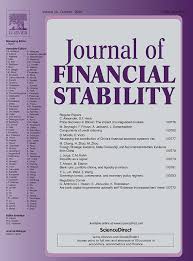
The Impact of Securitization on Credit Rationing: Empirical Evidence
in: Journal of Financial Stability, 2015
Abstract
We study whether banks’ involvement into different types of securitization activity – asset backed securities (ABS) and covered bonds – in Spain influences credit supply before and during the financial crisis. While both ABS and covered bonds were hit by the crisis, the former were hit more severely. Employing a disequilibrium model to identify credit rationing, we find that firms with banks that were more involved in securitization see their credit constraints more relaxed in normal periods. In contrast, only greater covered bonds issuance reduces credit rationing during crisis periods whereas ABS aggravates these firms’ credit rationing in crisis periods. Our results are in line with the theoretical predictions that a securitization instrument that retains risk (covered bond) may induce a more prudent risk behavior of banks than an instrument that provides risk transferring (ABS).

Bank Market Power, Factor Reallocation, and Aggregate Growth
in: Journal of Financial Stability, 2015
Abstract
Using a unique firm-level sample of approximately 700,000 firm-year observations of German small and medium-sized enterprises (SMEs), this study seeks to identify the effect of bank market power on aggregate growth components. We test for a pre-crisis sample whether bank market power spurs or hinders the reallocation of resources across informationally opaque firms. Identification relies on the dependence on external finance in each industry and the regional demarcation of regional banking markets in Germany. The results show that bank markups spur aggregate SME growth, primarily through technical change and the reallocation of resources. Banks seem to need sufficient markups to generate the necessary private information to allocate financial funds efficiently.
Working Papers
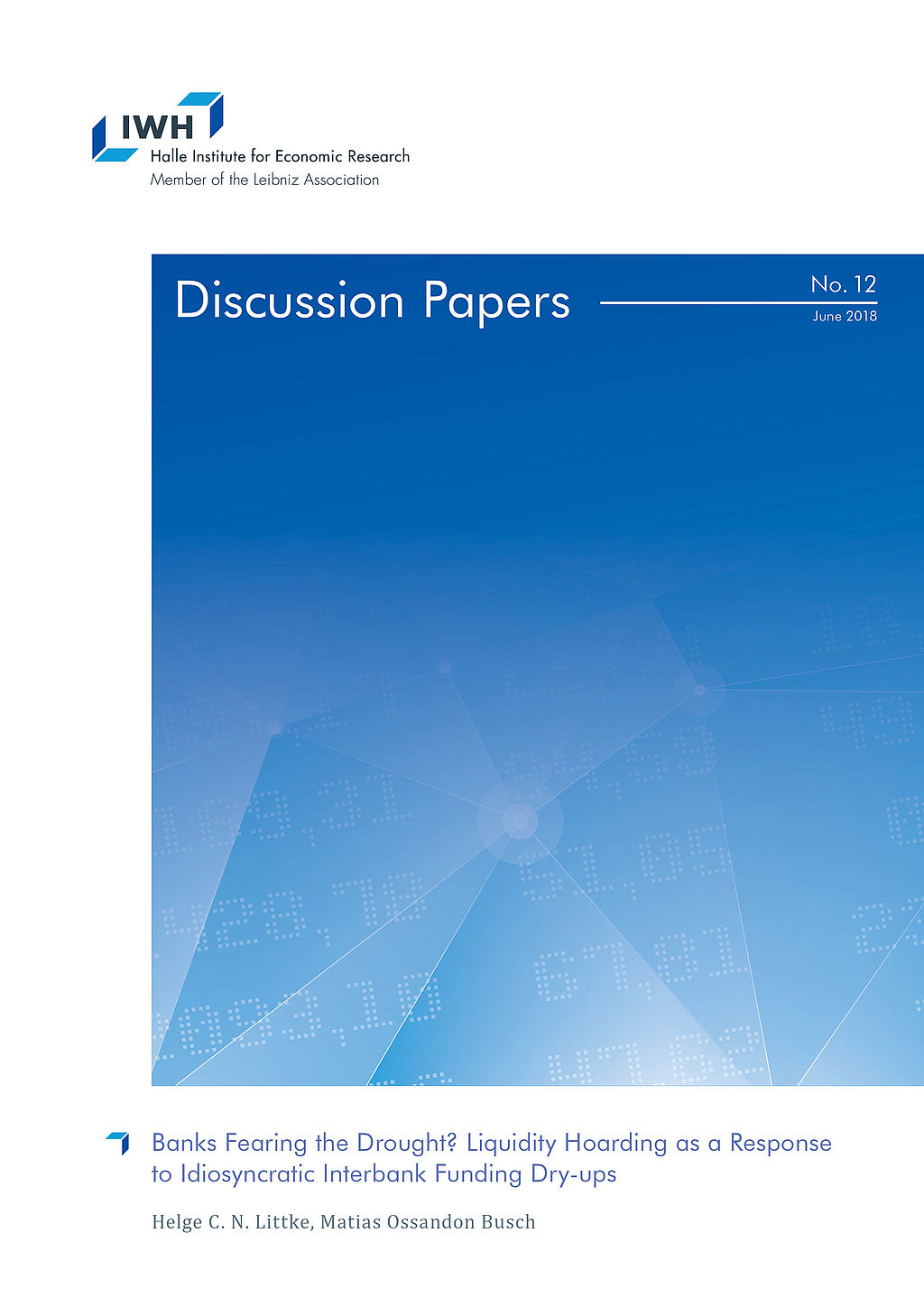
Banks Fearing the Drought? Liquidity Hoarding as a Response to Idiosyncratic Interbank Funding Dry-ups
in: IWH Discussion Papers, No. 12, 2018
Abstract
Since the global financial crisis, economic literature has highlighted banks’ inclination to bolster up their liquid asset positions once the aggregate interbank funding market experiences a dry-up. To this regard, we show that liquidity hoarding and its detrimental effects on credit can also be triggered by idiosyncratic, i.e. bankspecific, interbank funding shocks with implications for monetary policy. Combining a unique data set of the Brazilian banking sector with a novel identification strategy enables us to overcome previous limitations for studying this phenomenon as a bankspecific event. This strategy further helps us to analyse how disruptions in the bank headquarters’ interbank market can lead to liquidity and lending adjustments at the regional bank branch level. From the perspective of the policy maker, understanding this market-to-market spillover effect is important as local bank branch markets are characterised by market concentration and relationship lending.
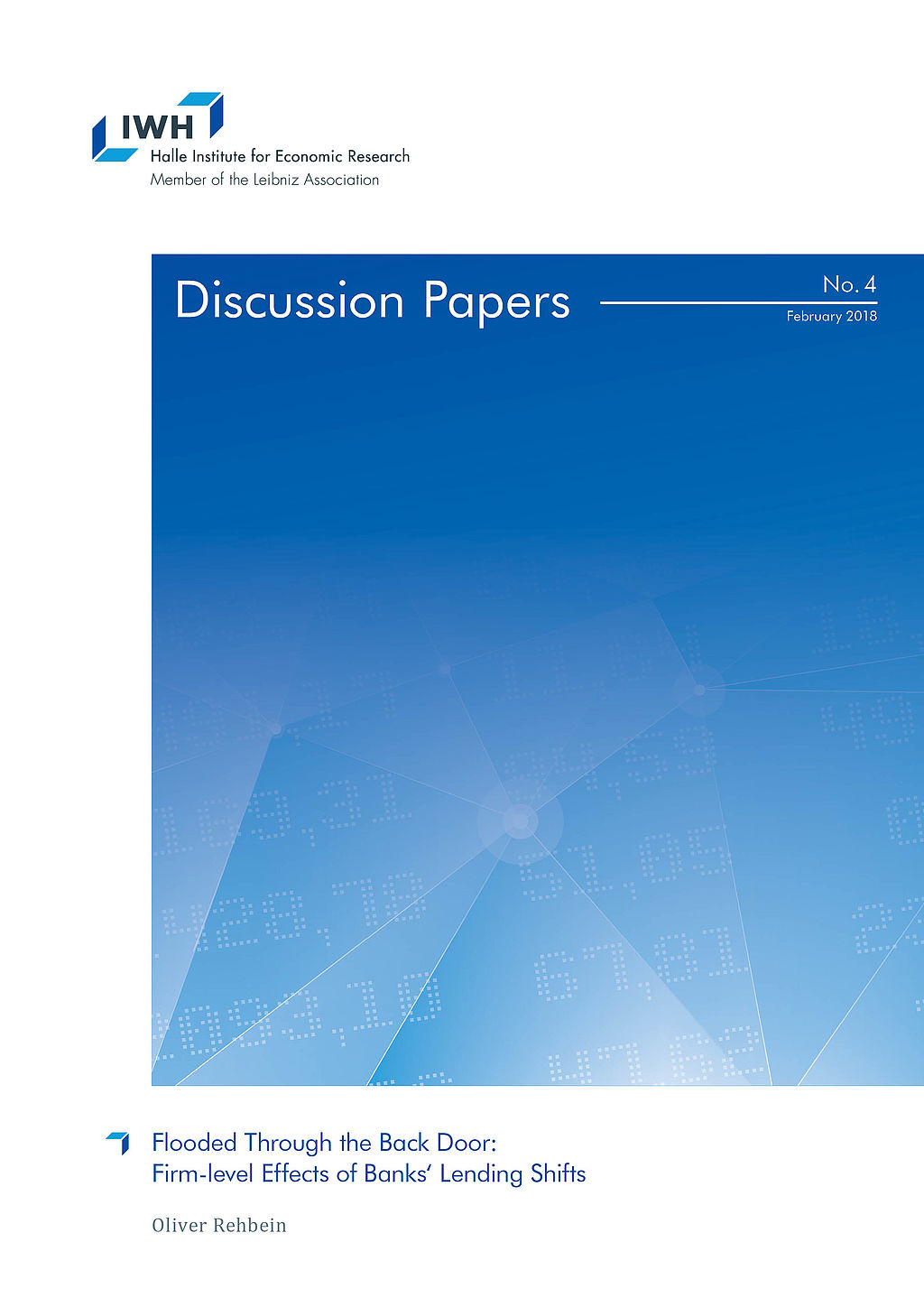
Flooded Through the Back Door: Firm-level Effects of Banks‘ Lending Shifts
in: IWH Discussion Papers, No. 4, 2018
Abstract
I show that natural disasters transmit to firms in non-disaster areas via their banks. This spillover of non-financial shocks through the banking system is stronger for banks with less regulatory capital. Firms connected to a disaster-exposed bank with below median capital reduce their employment by 11% and their fixed assets by 20% compared to firms in the same region without such a bank during the 2013 flooding in Germany. Relationship banking and higher firm capital also mitigate the effects of such negative cross-regional spillovers.
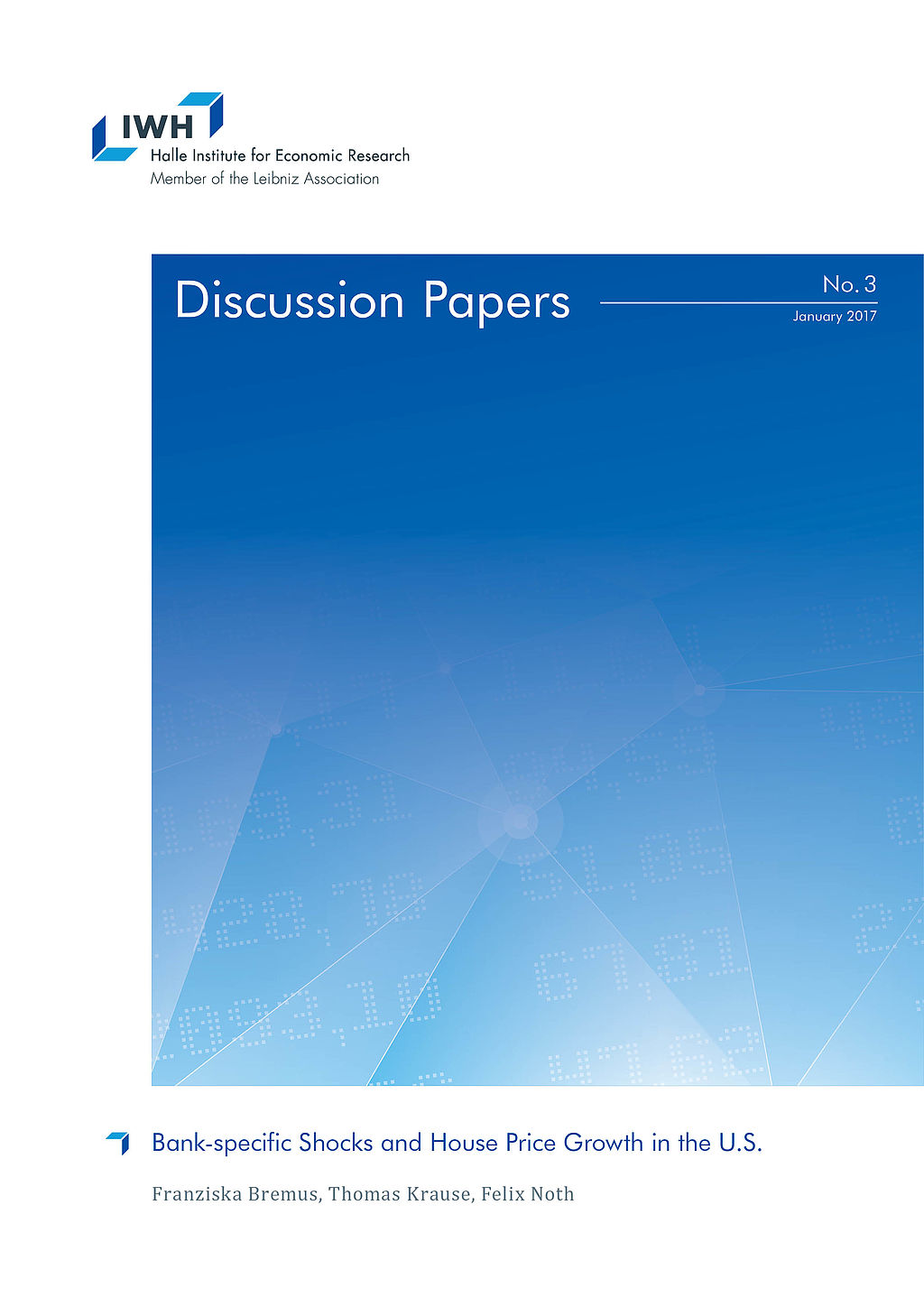
Bank-specific Shocks and House Price Growth in the U.S.
in: IWH Discussion Papers, No. 3, 2017
Abstract
This paper investigates the link between mortgage supply shocks at the banklevel and regional house price growth in the U.S. using micro-level data on mortgage markets from the Home Mortgage Disclosure Act for the 1990-2014 period. Our results suggest that bank-specific mortgage supply shocks indeed affect house price growth at the regional level. The larger the idiosyncratic shocks to newly issued mortgages, the stronger is house price growth. We show that the positive link between idiosyncratic mortgage shocks and regional house price growth is very robust and economically meaningful, however not very persistent since it fades out after two years.
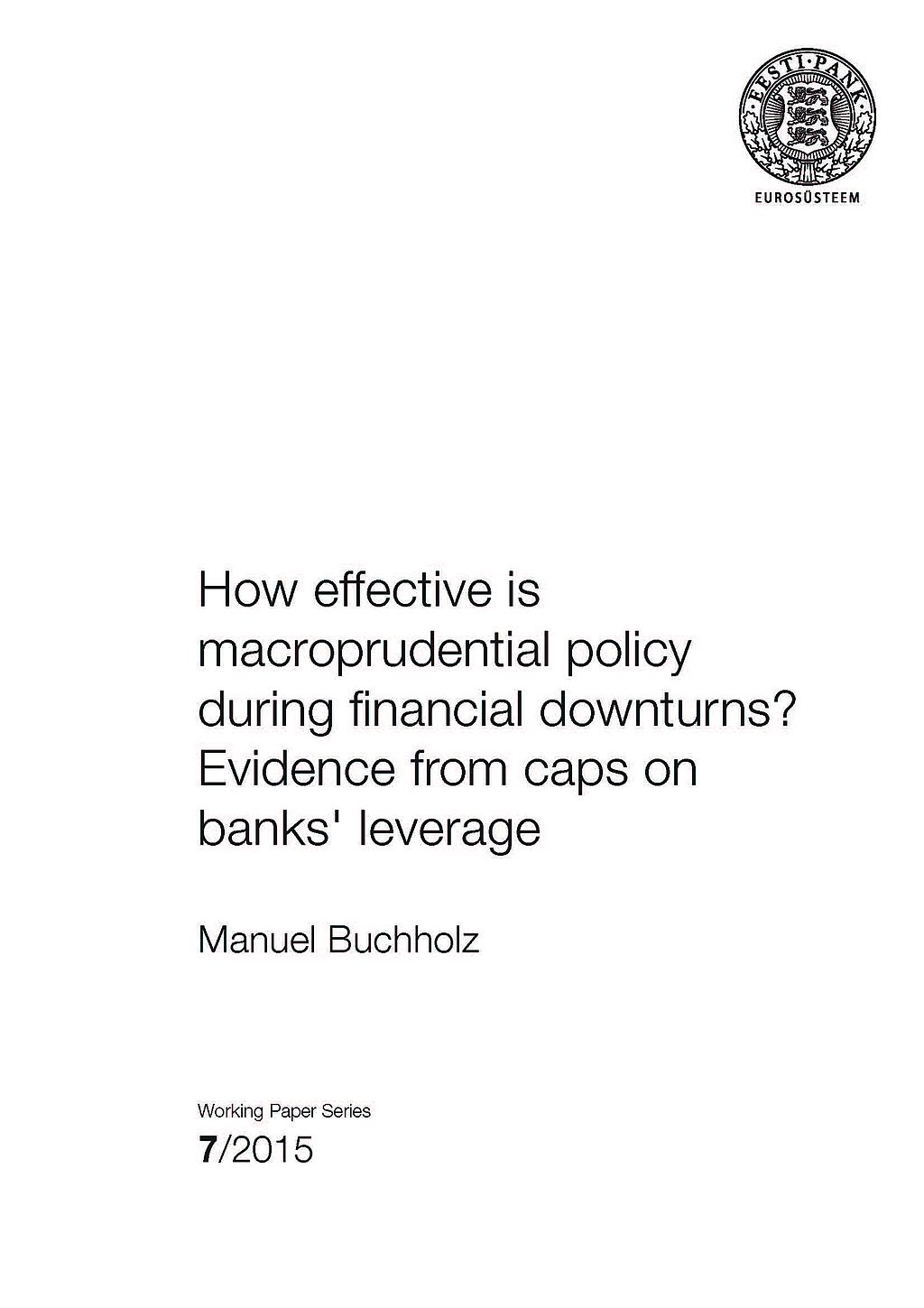
How Effective is Macroprudential Policy during Financial Downturns? Evidence from Caps on Banks' Leverage
in: Working Papers of Eesti Pank, No. 7, 2015
Abstract
This paper investigates the effect of a macroprudential policy instrument, caps on banks' leverage, on domestic credit to the private sector since the Global Financial Crisis. Applying a difference-in-differences approach to a panel of 69 advanced and emerging economies over 2002–2014, we show that real credit grew after the crisis at considerably higher rates in countries which had implemented the leverage cap prior to the crisis. This stabilising effect is more pronounced for countries in which banks had a higher pre-crisis capital ratio, which suggests that after the crisis, banks were able to draw on buffers built up prior to the crisis due to the regulation. The results are robust to different choices of subsamples as well as to competing explanations such as standard adjustment to the pre-crisis credit boom.

Monetary Policy under the Microscope: Intra-bank Transmission of Asset Purchase Programs of the ECB
in: IWH Discussion Papers, No. 9, 2015
Abstract
With a unique loan portfolio maintained by a top-20 universal bank in Germany, this study tests whether unconventional monetary policy by the European Central Bank (ECB) reduced corporate borrowing costs. We decompose corporate lending rates into refinancing costs, as determined by money markets, and markups that the bank is able to charge its customers in regional markets. This decomposition reveals how banks transmit monetary policy within their organizations. To identify policy effects on loan rate components, we exploit the co-existence of eurozone-wide security purchase programs and regional fiscal policies at the district level. ECB purchase programs reduced refinancing costs significantly, even in an economy not specifically targeted for sovereign debt stress relief, but not loan rates themselves. However, asset purchases mitigated those loan price hikes due to additional credit demand stimulated by regional tax policy and enabled the bank to realize larger economic margins.


















